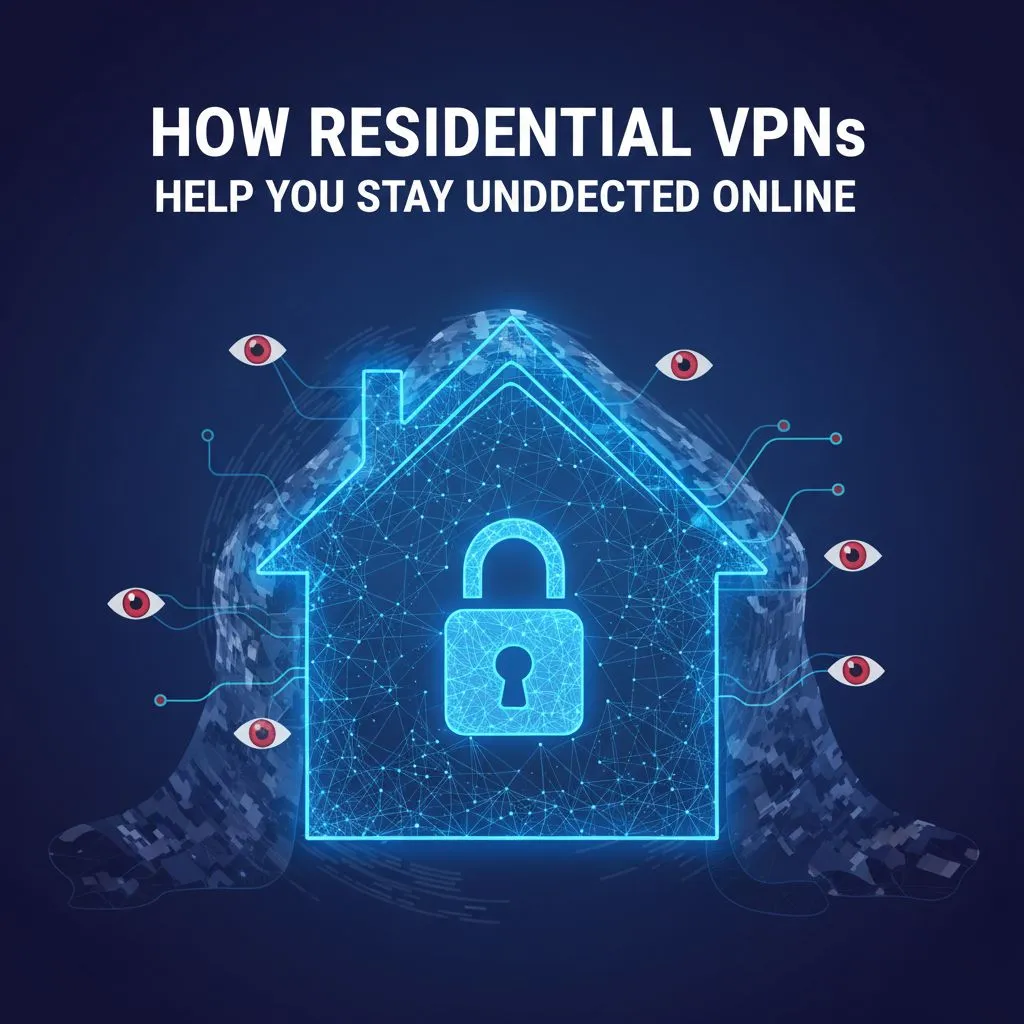How Residential VPNs Help You Stay Undetected Online

Digital surveillance has evolved into an omnipresent force. Every click generates data points that corporations monetize while governments accumulate comprehensive digital dossiers on citizens.
But sophisticated privacy tools now exist that fundamentally alter this dynamic. Residential VPNs represent the cutting edge of anonymity technology, leveraging actual home IP addresses to create virtually undetectable online presences.
The Surveillance Economy's Blind Spot
Traditional VPNs fail spectacularly at genuine anonymity. Netflix blocks them instantly. Banks flag their connections as suspicious.
Why? Because conventional VPN services route traffic through datacenter servers with IP addresses that scream "proxy connection" to any moderately sophisticated detection system. It's like wearing a fake mustache to a facial recognition convention.
Residential VPNs exploit a fundamental weakness in tracking systems: they utilize IP addresses from actual Internet Service Providers (ISPs) assigned to real homes. When you connect through a residential VPN, websites perceive authentic household traffic, not suspicious datacenter connections. The distinction proves remarkably effective at bypassing even enterprise-grade detection mechanisms.
Technical Architecture of Invisibility
Residential VPN networks operate through distributed peer-to-peer infrastructures rather than centralized server farms. Participants share bandwidth in exchange for compensation or reciprocal access, creating massive pools of legitimate residential IPs.
Your traffic bounces through someone's actual home connection in Dallas or Dublin before reaching its destination. The target server sees a Comcast subscriber browsing from Texas, not a VPN user masking their identity. This architectural innovation renders most detection algorithms obsolete.
But complexity increases proportionally. Maintaining stable connections across residential networks requires sophisticated load balancing algorithms and failover protocols. Connection speeds fluctuate based on the host's bandwidth availability and network congestion. Yet these technical challenges pale compared to the anonymity benefits.
Detection Evasion Mechanisms
Modern platforms employ increasingly aggressive VPN detection methodologies. Kaspersky's research identifies three primary techniques: IP reputation analysis, traffic pattern recognition, and behavioral fingerprinting.
Residential VPNs neutralize IP reputation checks completely. These addresses belong to legitimate ISP customers with established browsing histories. No blacklist contains Grandma's Verizon connection.
Traffic patterns present greater challenges. Datacenter VPNs exhibit predictable characteristics: perfect encryption, minimal latency variation, and suspiciously consistent packet sizes. Residential connections display natural irregularities (buffering, bandwidth fluctuations, variable latency) that mirror authentic user behavior. Advanced residential VPN services deliberately introduce controlled randomness to enhance authenticity further.
Privacy Implications Beyond Anonymity
Residential VPNs transform more than just IP addresses; they fundamentally restructure online identity architectures. Consider browser fingerprinting: websites track screen resolutions, installed fonts, and hardware configurations to identify users regardless of IP changes.
When routing through residential networks, your fingerprint blends with the host's digital environment. Tracking algorithms struggle to differentiate between you and millions of other users sharing similar residential connection profiles. It's statistical camouflage at scale.
This technology particularly benefits journalists operating in restrictive regimes. Traditional VPNs immediately flag users as attempting circumvention. Residential connections appear indistinguishable from regular citizens browsing social media, enabling secure communication channels without arousing suspicion.
Performance Considerations and Tradeoffs
Speed remains residential VPNs' Achilles heel. While datacenter connections leverage gigabit infrastructure, residential networks typically operate at 50-200 Mbps. Latency increases substantially when routing through multiple residential nodes.
Yet performance continues improving rapidly. Forbes reports that residential VPN speeds have doubled since 2022 through optimized routing protocols and strategic node selection algorithms. Premium services now maintain dedicated high-bandwidth residential nodes in major metropolitan areas.
The tradeoff equation shifts based on use case priorities. Streaming 4K content? Datacenter VPNs deliver superior bandwidth. Accessing region-locked financial services or conducting sensitive research? Residential VPNs' authenticity proves invaluable despite modest speed penalties.
Legal and Ethical Dimensions
Residential VPN legality varies dramatically across jurisdictions. While completely legal in most Western democracies, several nations explicitly prohibit VPN usage.
The ethical considerations prove equally complex. Some residential VPN networks operate through questionable consent models, embedding bandwidth-sharing software in free applications without transparent disclosure. Users unknowingly become exit nodes for others' traffic, potentially facilitating illicit activities through their home connections.
Reputable providers address these concerns through explicit opt-in models and strict usage policies. Participants receive clear compensation structures and maintain granular control over bandwidth allocation. Wikipedia's detailed analysis examines the regulatory landscape across 196 countries, highlighting the importance of understanding local laws before deployment.
Implementation Strategies for Maximum Effectiveness
Successful residential VPN deployment requires strategic configuration beyond simple activation. Browser selection significantly impacts detection rates: Chrome's extensive telemetry provides more fingerprinting data than privacy-focused alternatives like LibreWolf.
Cookie management proves equally critical. Maintaining consistent cookie profiles across sessions prevents behavioral analysis systems from flagging anomalies. Some users employ containerized browsing environments that preserve session states while rotating underlying IP addresses.
Time zone synchronization often gets overlooked. Accessing services from residential IPs in California while your system clock shows Tokyo time triggers immediate red flags. Advanced users configure virtual machines with location-appropriate system settings for complete operational security.
The Future of Undetectable Connectivity
Residential VPN technology continues evolving rapidly. Machine learning algorithms now predict optimal node selection based on destination characteristics, reducing detection rates to near zero.
Blockchain integration promises decentralized residential networks without central authorities. Smart contracts automatically compensate bandwidth providers while cryptographic proofs ensure traffic authenticity. These systems could eliminate the trust requirements inherent in current centralized models.
But detection technologies advance simultaneously. Platforms invest millions developing sophisticated VPN identification systems. The perpetual cat-and-mouse game drives innovation on both sides, ultimately benefiting users seeking genuine online privacy.
Quantum networking looms as the ultimate paradigm shift. Quantum key distribution could enable mathematically unbreakable encryption while quantum entanglement might facilitate instant, untraceable communication. Until then, residential VPNs represent the pinnacle of practically achievable online anonymity, transforming how privacy-conscious users navigate our extensively surveilled digital landscape.
